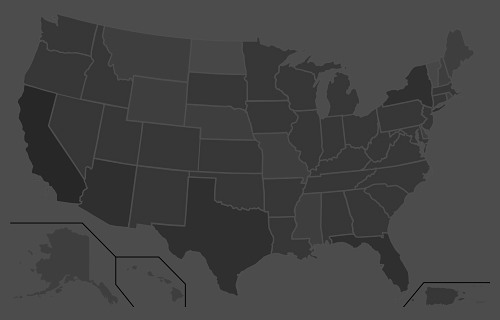“Our added winter moisture and active calling period led to a very long nesting and hatching season, starting in late April and extending into early summer, with chicks hatching as late as early July,” O’Dell said. “From a population standpoint, we are out of a deficit for the first time since 2001-2002. Quail are starting to pop up in places they haven’t been seen in a while.
“If you’ve never had the chance to experience what Arizona quail hunting built its name on, then this would be the year to get out and enjoy it.”
Meanwhile, hunters should note that the season for Mearns’ quail doesn’t begin until Dec. 4. It’s summer rainfall that plays a key role in nesting success and population numbers of this species. After a spotty and relatively weak monsoon across southern Arizona, these birds are likely to be abundant only in pockets that received sufficient precipitation this summer.
A valid Arizona hunting or combination hunt and fish license is required for all hunters 10 and older. Those hunters under 10 must either have a valid hunting or combination hunt and fish license, or be accompanied by an adult who possesses a valid hunting or combination hunt and fish license. Licenses can be purchased online or at license dealers statewide. A youth combination hunt and fish license (ages 10 to 17) is $5.
The general bag limit is 15 quail per day in the aggregate, of which no more than eight may be Mearns’ quail (when the Mearns’ season opens Dec. 4). The general possession limit is 45 quail in the aggregate after opening day, of which no more than 15 Gambel’s, scaled or California quail in the aggregate may be taken in any one day. After the opening of the Mearns’ season, the 45-quail possession limit may include 24 Mearns’ quail, of which no more than eight may be taken in any one day.
More quail-hunting information can be found on the department’s website at https://www.azgfd.com/Hunting/. Another resource for both new and experienced hunters alike is “An Introduction to Hunting Arizona’s Small Game.” Written by Randall D. Babb, the 196-page, full-color book covers where and how to hunt small game birds (like quail), squirrels, rabbits, ducks and geese. It also includes how to prepare and cook your harvest, with illustrations and recipes. The book can be ordered for $16.95 at www.azgfd.gov/publications.
Finally, hunters should check out O’Dell’s techniques for field-dressing quail at https://www.youtube.com/watch?v=3gRwZAcWzzk.
####
Publishers Notes: OUT OF STATE HUNTERS, FISHERMEN & OUTDOOR ENTHUSIASTS; Due to the Covid 19 pandemic, there could be limitations for OUT of STATE hunters, fishermen and other outdoor enthusiasts to include a 14-day quarantine requirement or negative COVID-19 testing alternative. Please check with the State's Department of Natural Resources BEFORE you travel or apply for the 2020 Fall Hunts.
Disclaimer: The views expressed on this site are that of the authors and not necessarily that of TBC Press
On November 3, Colorado voters passed Proposition #114 - The Restoration of Gray Wolves, a measure directing the Colorado Parks and Wildlife Commission to develop a plan to reintroduce gray wolves west of the Continental Divide. The passage of Proposition 114 has led to increased interest in wolves in Colorado, specifically, the wolf pack previously confirmed to be present in Moffat County.
The gray wolf remains under the management control of the U.S. Fish and Wildlife Service until at least January 4, 2021, when the proposed removal of Endangered Species Act (ESA) protections would take effect. At this time, CPW continues to monitor the area and take sighting reports and game camera images from citizens, sportspersons and others on the ground.
“The federal delisting discussion has caused some confusion in the state about the status of gray wolves in Colorado,” said Dan Prenzlow, director of Colorado Parks and Wildlife. “Regardless of the USFWS listing status, gray wolves remain listed as a state endangered species, and killing a wolf in Colorado for any reason other than self-defense remains illegal.”
Colorado Passes the Restoration of Gray Wolves Proposition #114
Submitted by: TBC Press
Posted on: 11/30/20
The Backcountry Press
The country's premier daily HUNTING, FISHING & OUTDOOR news in the USA and around the globe. Read whats happening in your neck of the woods & beyond.
© 2020 TBC Press - All Rights Reserved Website Design by:
News # 14105
While protected under the ESA, killing a wolf in Colorado can result in federal charges, including a $100,000 fine and a year in prison, per offense. As the gray wolf remains a state endangered species, severe penalties will still apply when CPW regains management control in the state.
Wolves are elusive in nature, making visual confirmation more challenging than some other species. Despite this, game camera images, as well as tracks and fur, have been detected in the field throughout the summer and into November.
“As recently as last week we have confirmed the presence of wolves in Moffat County via pictures and recorded howling. Staff will continue monitoring the area as part of our overall wildlife management and conservation duties, and we will share information when we have updates or can help clear up any misunderstanding of wolf activity in Colorado,” said Prenzlow.
The public is urged to contact CPW immediately and fill out a report if they see or hear wolves or find evidence of any wolf activity in Colorado. The Wolf Sighting Form can be found on the CPW website.
At the November 19, 2020, Colorado Parks and Wildlife Commission meeting, the commission discussed their next steps in undertaking the planning efforts directed by Proposition 114. To stay updated on wolves in Colorado, visit the wolf management page of our website, or sign up for the CPW eNews newsletter.
####
Publishers Notes:
Our country is still battling COVID-19. To avoid the spread of this virus and continue to enjoy outdoor activities, ALL outdoor enthusiasts (man, woman, child) should follow the guidelines set by nps.gov. These guidelines include; social distancing, the Leave No Trace principles, including pack-in and pack-out, to keep outdoor spaces safe and healthy.












